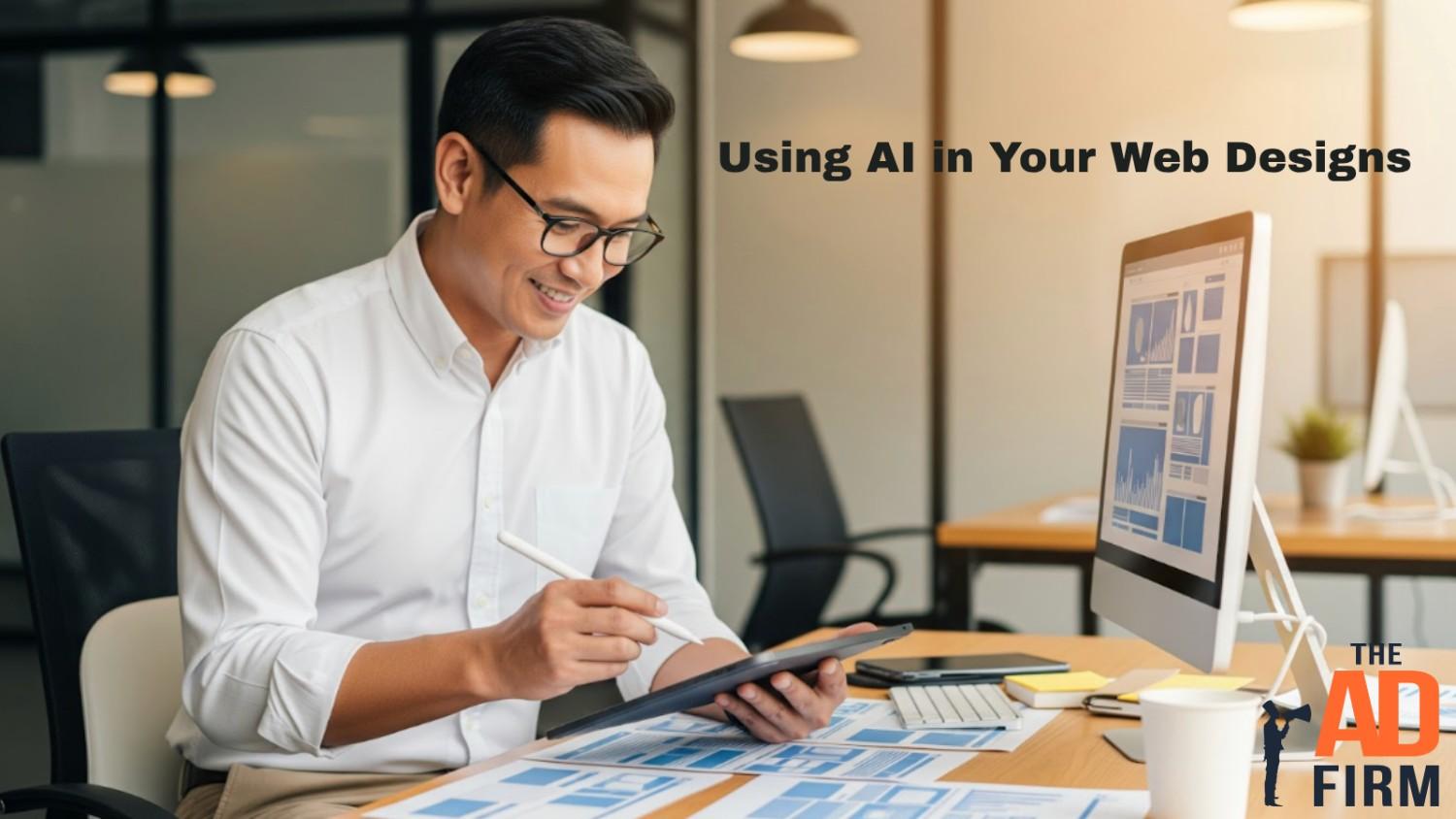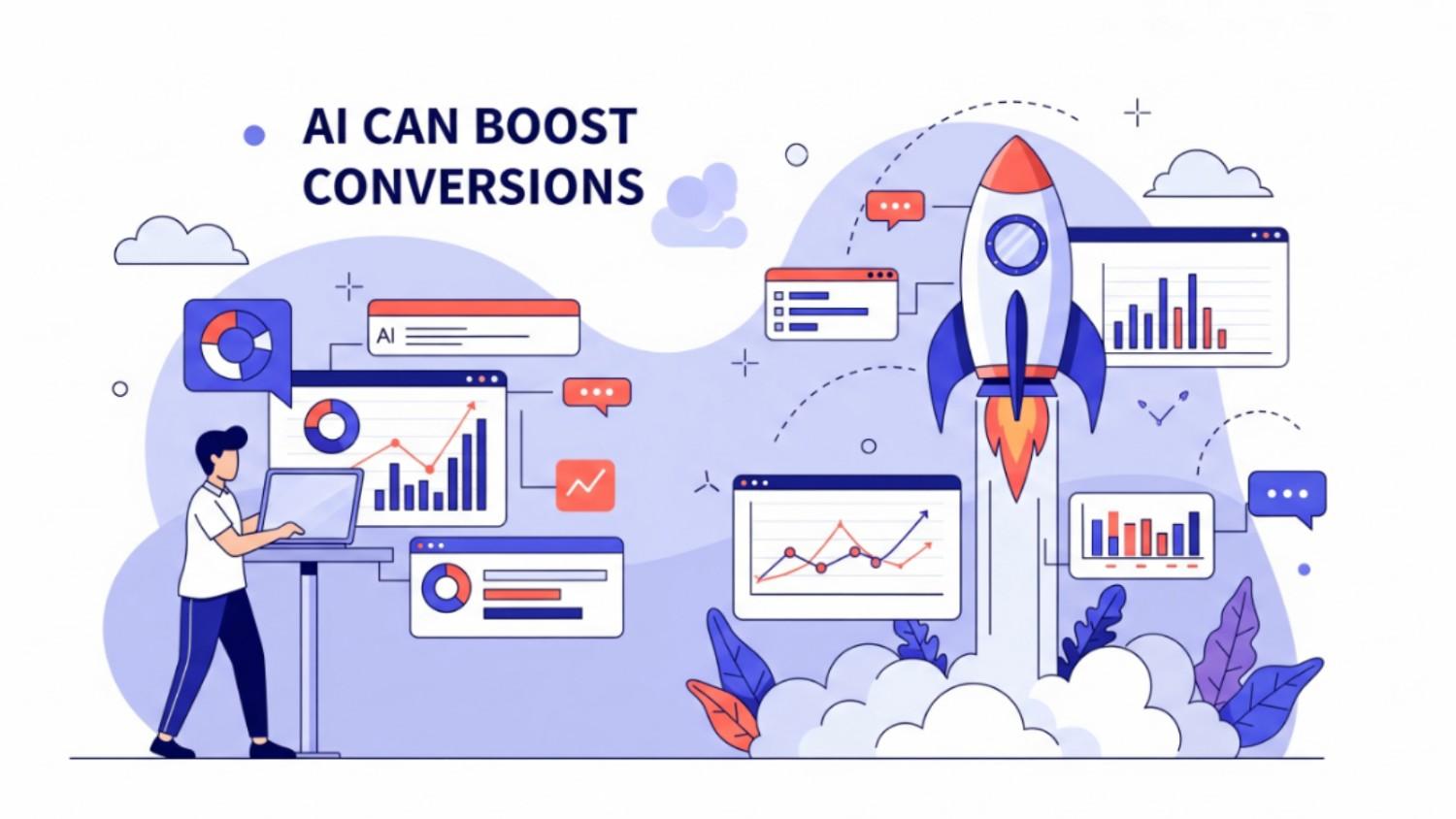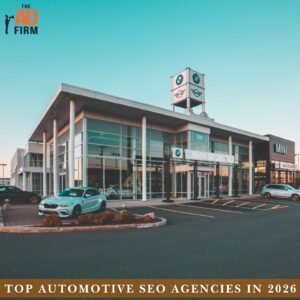Not long ago, websites were designed once and left that way for years. But things have changed. Today, artificial intelligence can adjust a website’s appearance or functionality based on user behavior, eliminating the need for developer intervention.
If visitors keep skipping past your contact form, AI can move it higher on the page. If people spend more time reading reviews than product specs, it can spotlight those reviews more prominently.
This shift is changing what it means to offer an excellent web design service; one that not only looks good but also adapts in real-time to meet user needs and drive results. AI-driven layout changes are quickly becoming a key tool for creating smarter, more responsive sites.
In this blog, we’ll walk through exactly how AI-powered layouts work, how they differ from traditional designs, and what kinds of changes they can make. We’ll also examine when this tech enhances conversions and when it can go too far.
If you’re not a web designer, don’t worry. This guide is made for business owners, marketers, and decision-makers who want smarter websites without getting lost in technical jargon.
What AI-Powered Adaptive Design Means Today
AI-powered adaptive design enables your website to respond to user behavior, not just screen size. This makes the experience more valuable, more personal, and more likely to result in a conversion. Here’s what that really means:
- Adaptive design responds to user behavior, not just devices: Unlike traditional layouts that look the same for everyone, adaptive design changes based on how people interact with a page. If users frequently scroll past a feature, the layout may shift to bring it into focus. This makes the page feel more personalized and relevant to each visitor. It’s about enhancing the user experience of content, not just its appearance.
- AI makes layout changes smarter by learning from behavior patterns: AI monitors clicks, scroll depth, and time spent on each section. It detects common drop-off points and hidden opportunities to improve layout flow. It gradually applies these insights to refine layouts beyond what manual design might catch. The result is a site that continuously improves itself based on real data.
- This goes beyond responsive design, which only adapts to screen size: Responsive design adjusts the layout based on device dimensions, such as switching to a single column on mobile. But it doesn’t respond to what users do on the page. AI-driven adaptive design monitors behavioral signals in real-time and uses them to optimize the experience. This means layout changes aren’t just cosmetic; they’re driven by how people actually engage.
This is how websites are quietly becoming more dynamic today. They’re not redesigned from scratch; they just keep learning what works and what doesn’t.
Elevate Your Market Presence with The Ad Firm
- SEO: Boost your search engine visibility and supercharge your sales figures with strategic SEO.
- PPC: Target and capture your ideal customers through highly optimized PPC campaigns.
- Social Media: Engage effectively with your audience and build brand loyalty through targeted social media strategies.
Read also: The Future of Website Development: Emerging Trends and Technologies
How AI Actually Changes Layouts
AI goes beyond tracking user behavior; it actively reshapes layouts based on what’s working and what’s not. Behind many of today’s smarter websites is a digital marketing company leveraging these adaptive tools to guide users more efficiently and boost on-page actions without manual tweaks.
1. Reorders Content to Match What Users Pay Attention To
AI tracks which sections draw attention and which ones get ignored, then shifts page elements to match that attention. This ensures key content is visible without a complete site overhaul.
- Moves high-performing blocks upward for visibility: If users engage with testimonials, forms, or product descriptions buried at the bottom, AI can shift them higher where they’re more likely to be noticed. This prevents key actions from being missed simply due to layout placement. Instead of assuming what should be on top, AI uses real engagement data to make decisions. Over time, this helps maximize the visibility of content that drives conversions.
- Pushes low-engagement sections further down the page: Areas that consistently get skipped, like a long intro or unused features, can be deprioritized. This doesn’t delete them but simply gives more space to sections that matter more to your visitors. This helps reduce cognitive load for users and prevents unnecessary friction. It improves flow by prioritizing the sections users value most.
- Restructures layouts based on device behavior patterns: What desktop users notice might be different from what mobile users focus on. AI learns these platform-specific behaviors and adjusts layouts accordingly. This ensures that mobile visitors aren’t stuck scrolling past content prioritized for desktops. It creates a more natural browsing experience tailored to how each group interacts.
2. Hides or Minimizes Low-Impact Elements
Not every part of a website adds value to every visitor. AI reduces visual clutter without disrupting the layout, allowing people to focus on what truly matters during their visit.
- Auto-hides banners or modules that users skip repeatedly: If AI notices that users constantly scroll past certain blocks, like newsletter popups or outdated promos, it can suppress these from view. This helps keep the layout clean and avoids annoying returning visitors. Users don’t waste time hunting for what they need. It makes the page feel more intuitive without requiring manual changes.
- Condenses long sections into expandable blocks: For content that’s relevant to some users but not all, AI can fold it into collapsible sections. This way, it’s available if someone wants it, but doesn’t dominate the screen. This balances access with readability. It also creates a more personalized layout without stripping away information.
- De-emphasizes rarely used features or links: AI can reduce the visual weight of buttons or menu items that don’t get clicked. This includes graying them out, shrinking them slightly, or moving them to secondary menus. The result is a simplified path to the most frequently used features. Over time, this improves site usability without sacrificing full functionality.
Read also: 6 Conversion-Critical Web Design Elements You Might Be Missing
Enhance Your Brand Visibility with The Ad Firm
- SEO: Enhance your online presence with our advanced SEO tactics designed for long-term success.
- Content Marketing: Tell your brand’s story through compelling content that engages and retains customers.
- Web Design: Design visually appealing and user-friendly websites that stand out in your industry.
3. Adjusts Navigation Based on Interaction Data
Your site’s menu structure doesn’t need to stay fixed. AI utilizes real interaction signals to reorganize how users navigate, without relying on assumptions.
- Surfaces most-clicked pages in prominent spots: If certain pages get a lot of attention, AI can promote them in the nav bar or homepage. This gives users quicker access to what they already want. It also reduces the number of clicks needed to reach high-value pages. That added convenience helps improve engagement and time on site.
- Removes or hides links users ignore: Low-traffic pages can be demoted to dropdowns or footer links to reduce clutter. This keeps your navigation clean and prevents overwhelming new visitors. AI does this gradually, based on patterns, rather than making sudden removals. The end goal is to match menu options to what real users actually use.
- Reorganizes links for different audience types: AI can display different navigation priorities for first-time versus returning users, or by device. For instance, mobile users might see shorter menus with a focus on location info or hours. This dynamic navigation streamlines the path to conversion and boosts user satisfaction. It’s a dynamic experience that evolves in response to behavior.
Why AI Layouts Boost SEO and Conversions
When your site layout adapts to real user behavior, it doesn’t just look better, it performs better. This section explains how AI-driven layout changes lead to tangible improvements in visibility, engagement, and conversions.
- Faster load experiences increase session depth: When AI hides unnecessary elements and streamlines content, pages load faster and feel lighter. This improves the duration users stay and the number of pages they visit per session. Google sees this as a positive user signal, which can influence rankings. Faster navigation also reduces frustration, which helps keep users on track toward their goal.
- Layout shifts reduce decision fatigue: AI removes distractions and highlights relevant content based on user patterns. This helps users focus on what matters most, rather than wading through clutter. A straightforward layout facilitates faster decision-making, such as booking, purchasing, or completing a form. Less friction in the journey means higher conversion rates.
- Smarter page flows boost crawlability: By organizing content blocks according to relevance and engagement, AI can improve how bots understand your site structure. This helps ensure that the most valuable content is indexed and prioritized in search results. Google favors sites with clear hierarchies and updated layouts. Better crawl efficiency often translates to better visibility.
- Ongoing optimization prevents stagnation: Traditional web pages often go untouched for months or years, even as user behavior shifts. AI continuously refines layouts through micro-adjustments, based on fresh interaction data. This creates a form of real-time UX testing without human intervention. The result is a site that stays aligned with what users actually need.
- Improved layout = better signals for ad campaigns: Paid campaigns that land on adaptive pages benefit from higher relevance and engagement. AI-refined layouts surface the most clicked elements, giving users fewer reasons to bounce. This raises Quality Scores on platforms like Google Ads. Over time, that means lower cost-per-click and more substantial ROI.
Build Smarter, Faster-Converting Layouts with The Ad Firm
Your website shouldn’t just look polished, it should think. At The Ad Firm, we blend AI-powered insights with conversion-driven web design to build layouts that learn, adapt, and perform. Whether you’re refining landing pages, optimizing UX for Google SGE, or creating tailored CRO strategies, our team ensures your site evolves as fast as your visitors do.
Streamline Your Digital Assets with The Ad Firm
- Web Development: Build and manage high-performing digital platforms that enhance your business operations.
- SEO: Leverage advanced SEO strategies to significantly improve your search engine rankings.
- PPC: Craft and execute PPC campaigns that ensure high engagement and superior ROI.
Tap into adaptive design that aligns with SEO, user behavior, and business goals, without the guesswork. Get in touch with our web strategy experts and start building a smarter site today.





